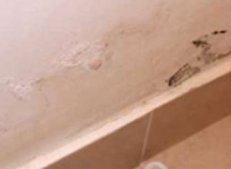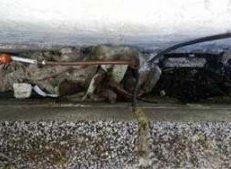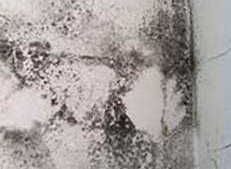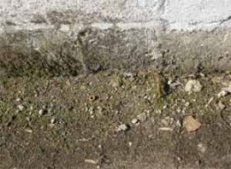
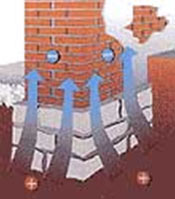 Summary:In this project we show you how to treat rising damp using a range of DIY rising damp treatments. We’ll take you through the different causes and signs of rising damp as well as how to treat each of these with different rising damp solutions.
Summary:In this project we show you how to treat rising damp using a range of DIY rising damp treatments. We’ll take you through the different causes and signs of rising damp as well as how to treat each of these with different rising damp solutions.
What is Rising Damp?
Rising damp is moisture present in your walls as a result of water in the ground underneath or next to your walls rising up through the fabric of the wall, whether it be brick, block or stone. The water travels upwards through the wall as a result of capillary action (where water is sucked through a small opening such as a tube or hole) through the tiny holes in the brick or stone. The water stops rising at a height where gravity counteracts the upwards force of the capillary action. This ‘rising damp’ usually reaches a maximum height of 1.2m, but the effects of the damp, such as salt deposits, may be seen higher up due to the presence of non-breathing wall coverings such as vinyl wallpaper and non breathing plasters, renders and paints.
How rising damp can rise up from the ground and on up into your walls
What are the Signs of Rising Damp?
Typical signs of rising damp rather than other damp problems are a ‘tide line’ of yellowish or brownish staining or blown plaster in the lower area of your wall above your skirting board. You also might have damp or rotting skirting boards or flooring. You may see white, fluffy deposits in your plaster – these are ‘salts’ which the damp has washed out of your bricks and into your plaster. Black spots of mould may also appear on on the damp areas of your wall.
A yellow or brown ‘tide line’ above your skirting board is one of the signs that you may have rising damp in your walls
As damp evaporates from your walls it can leave salt deposits behind – these are another sign that you have a damp issue
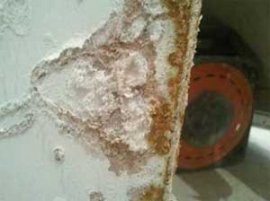 What Causes Rising Damp?
What Causes Rising Damp?
Rising damp problems often occur as a result of not having a Damp Proof Course installed or having a Damp Proof Course that is faulty due to age or inadequate installation. A Damp Proof Course is a waterproof layer in your wall (or both walls if you have a cavity wall), ideally about six inches from the outside ground on your external wall and under your raised timber floor or near your concrete floor on your internal wall (so both DPC's are on the same level). This layer repels water – a variety of different DPC's are available and will be discussed in this project.
A damp proof course will stop rising damp from rising up into your walls – it is a waterproof layer that sits between your bricks across your house
You may be experiencing rising damp even if your Damp Proof Course is functioning well –in this case the DPC may be breached - that is, there may be something attached to your walls that is allowing water to travel around the Damp Proof Course and continue moving upwards.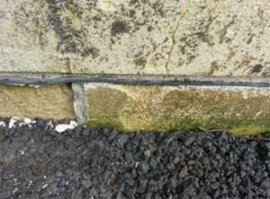 It may be that there is an area of ground next to your external wall that is higher than your DPC, or there is an outside structure (such as steps) which is attached above the DPC, allowing water to travel up through this and cross to the wall over the DPC. There are several other ways your DPC might be bridged. Your internal plaster may be directly connected to a solid floor at the bottom on your internal wall. Your cavity wall may also have debris inside of it, whether it is leftover building materials or something else. If this debris reaches above the DPC's then this can create another bridge for moisture to travel from the ground over the DPC and up your wall as rising damp.
It may be that there is an area of ground next to your external wall that is higher than your DPC, or there is an outside structure (such as steps) which is attached above the DPC, allowing water to travel up through this and cross to the wall over the DPC. There are several other ways your DPC might be bridged. Your internal plaster may be directly connected to a solid floor at the bottom on your internal wall. Your cavity wall may also have debris inside of it, whether it is leftover building materials or something else. If this debris reaches above the DPC's then this can create another bridge for moisture to travel from the ground over the DPC and up your wall as rising damp.
Rising damp can happen as a result of debris present in your cavity wall bridging the Damp Proof Course and giving water a way to travel around the DPC and up into your walls
